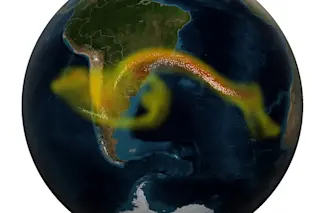This article is reposted from the old Wordpress incarnation of Not Exactly Rocket Science.
Fizzy drinks like Perrier and Coca-Cola are targeted at a huge range of social groups, but if fruit flies had any capital to spend, they'd be at the top of the list. Unlike posh diners or hyperactive kids, flies have taste sensors that are specially tuned to the flavour of carbonated water.
Humans can pick up five basic tastes - sweet, salty, sour, bitter and umami (savoury). But other animals, with very different diets, can probably expand on this set. And what better place to start looking for these unusual senses than the fruit fly Drosophila, a firm favourite of geneticists worldwide, and an animal with very different taste in food to our own.
Drosophila's tongue contains structures that are the equivalent of our own taste buds. They are loaded with taste-sensitive neurons and the activity ...













